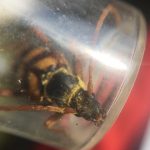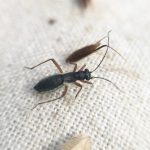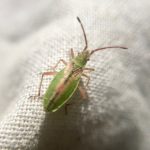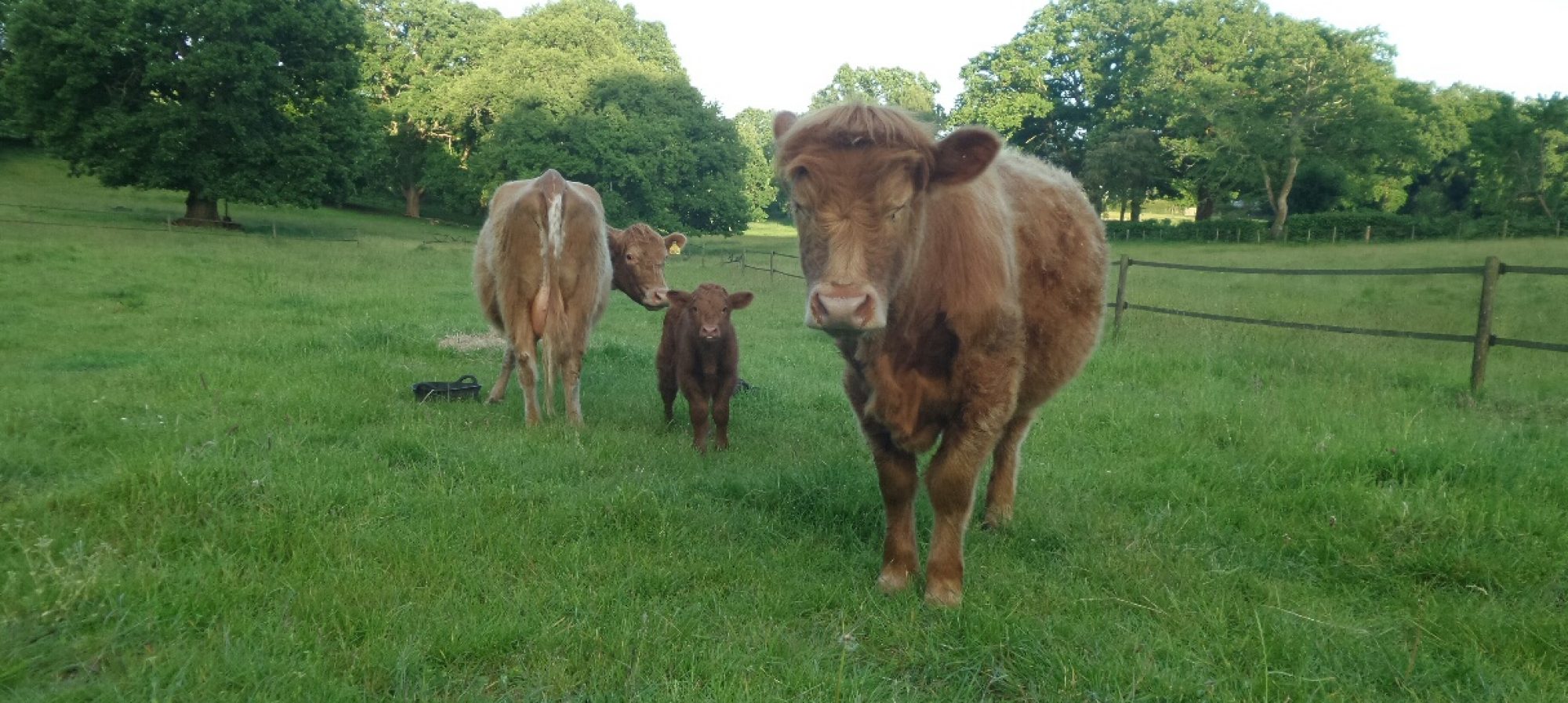Of all the amazing ecologists who have given their time to help us record the species on the site recently Scotty Dodd and Stephen Miles have helped us to understand the farm from a different perspective.
Scotty, from the outset has shaken our view of what is beneficial to biodiversity and made a fantastic figure laden with sweep nets and other equipment as he arrived at the bioblitz on the 20th July.
Scotty recorded 133 species:
[W]ith two Nationally Scarce species (both associated with dead-wood / old growth trees) and of course your wood ants which are globally Near Threatened and really should be notable in the UK as they are a keystone species for numerous other invertebrates, including a supporting cast of scarce and rare species.



For a full list of species check out our invertebrate data tables. As well as some really useful conversations around bracken management Scotty also made the following observations:
Key points are to keep removing nutrient load, e.g. grazing does this to some degree. Areas where grazing is not having desired effect will need some form of cut and collect management, i.e. remove arisings. Allowing islands of scrub to develop with the grassland will give you more of the mosaic feel that Amanda talked about, but islands will grow if not kept in check! Islands can also act as nurseries for future veteran trees – key open grown trees would be Pedunculate Oak and Beech, Sweet Chestnut should probably be discouraged? Not a true native species but does eventually make a nice parkland tree (see Greenwich Park, Petworth, Lodsworth etc). However the quality for invertebrates is questionable, certainly much poorer than oak.
Try and decide on indicator species to monitor your progress and assess which way your project is going. These might be presence/abundance of certain plants, butterflies, other insects etc.
The woodland needs a lot of work to remove Rhody, good luck! Once Rhody is suppressed you will be able to see the wood for the trees and decide if you need to do anything more. I suspect that it will still be quite a dark woodland so a bit of glade creation / maintaining present open areas would be beneficial. The real acid test here will be monitoring your wood ant population, nest size etc. Try and find that photo of when the big nest was active and assess what the woodland was like back then and aim for that! Key associated species to look for would be Scarce 7-spot Ladybird, Shining Guest Ant and Clytra quadripunctata. I choose these as they are easy to look for, pretty much everything else associated with the wood ants is hard to identify and/or requires sieving of the nest material when the ants are active.
Stephen Miles is interested in Bees and Wasps, we soon discovered we had no idea of the diversity of this species. Insects that we would previously have overlooked turned out to be bees!
Stephen’s key message was that unhealthy trees and rotting wood are vital for insect diversity. That is good as we have lots of rotting wood!
[As] we left the fields we observed two or more Lasioglossum species of bees in the yellow composite flowers (Hawkbits and Hawkeeds), one of which might have bee Lasioglossum minutissimum (Kirby) but I would have to kill it to be sure.
[ ]The garden was the star of the visit and it was attracting species out from the rest of the site. I was most impressed that [Linda] keeps it well tended and hoed. The species she grows were most attractive to many solitary bees, these included many mask bees of the genus Hylaeus. We also observed the bee, Anthophora bimaculata (Panzer) and males and females of the attractive yellow spotted Wool Carder Bee, Anthidium manicatum (L.) on various labiate flowers, a specimen of the solitary wasp, Cerceris rybyensis (L.) which preys on solitary bees of the genus Lasioglossum was present in the heather garden.
Again thank you to Scotty and Stephen for their invaluable help and advice.

